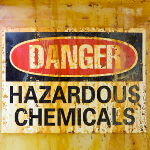
Avoid the hazardous chemicals in conventional lice treatment by using Littlebugs natural products.
Toxic Chemicals in Some Lice Products
Kerosene derivatives. Pesticides. Petroleum. Are we REALLY prepared to expose our children or ourselves to these chemicals?
No over the counter or prescription head lice product has been proven 100% safe and effective. And repeated use of products with chemicals can lead to ongoing outbreaks, toxic build up in the system and resistance to the pesticides.
The Environmental Protection Agency (EPA) is responsible for testing and ensuring most pesticide head lice treatments in the U.S. are safe. However, we ask: Why risk it when there are natural alternatives that are proven effective without fear of any of the harmful side effects?
The regulation of pediculicides pesticides (lice-killing pesticides) by the Food & Drug Administration (FDA) has created the misconception that they must be safe. These pesticides – found in products like roach spray and weed killer – are alarmingly overused on children with lice.
Before you make a choice on what to use, here’s what you should know about the chemicals in most over-the counter and prescription head lice treatment products.
Lindane (Kwell)
Though this toxic chemical has been globally banned for use in agriculture, it is still the working ingredient in more than 2 million prescriptions for head lice and scabies. New York followed California in banning the chemical compound and it’s forbidden in 52 countries. Despite evidence of its health dangers, parts of the U.S. still allow prescriptions containing Lindane in pharmaceutical compounds.
Lindane can have a number of health impacts, including neurological effects, cancer, blood disorders, endocrine disruption, liver toxicity, reproductive effects and immunological effects.
Read more about Lindane from the Pesticide Action Network.
Malathion (Maldison)
Malathion is a highly toxic derivative of nerve gas which works by disrupting the chemical reactions in lice and human nervous systems. Extremely toxic orally, Malathion is a possible carcinogen, mutagen (mutates DNA) and endocrine disrupter. In its raw state, malathion is readily absorbed into the skin.
Solvents
Head lice pesticide preparations contain both “inert” and “active” ingredients. Active ingredients are the chemicals that kill the lice. Inert ingredients are the carriers for these chemicals. In lice treatment products, it’s common for active chemical ingredients to be dissolved in an inert solvent.
However, “inert” does not equal “harmless.” Exposure to these toxic solvents can be significantly worse than the actual chemicals themselves.
